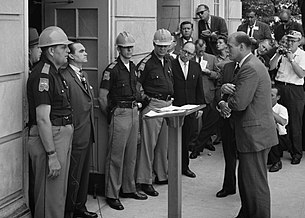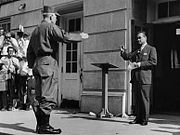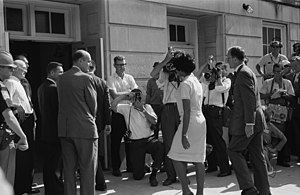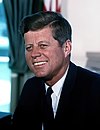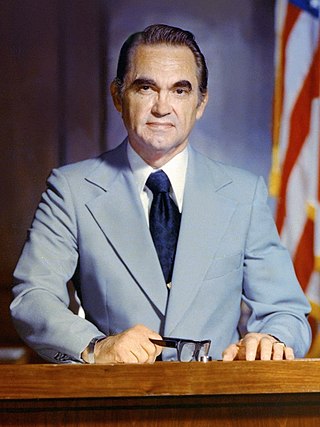
George Corley Wallace Jr. was an American politician who served as the 45th governor of Alabama for four terms. He is notoriously remembered for his staunch segregationist and populist views. During Wallace's tenure as governor of Alabama, he promoted "industrial development, low taxes, and trade schools." Wallace sought the United States presidency as a Democratic Party candidate three times, and once as an American Independent Party candidate, being unsuccessful each time. Wallace opposed desegregation and supported the policies of "Jim Crow" during the Civil Rights Movement, declaring in his 1963 inaugural address that he stood for "segregation now, segregation tomorrow, segregation forever."

James Alexander Hood was one of the first African Americans to enroll at the University of Alabama in 1963, and was made famous when Alabama Governor George Wallace attempted to block him and fellow student Vivian Malone from enrolling at the then all-white university, an incident which became known as the "Stand in the Schoolhouse Door".
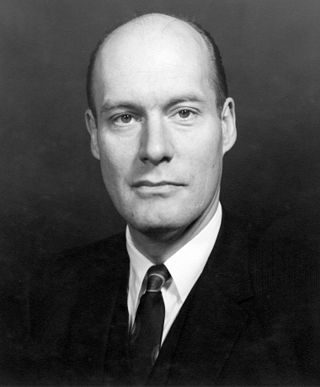
Nicholas deBelleville Katzenbach was an American lawyer who served as United States Attorney General during the Lyndon B. Johnson administration. He previously served as United States Deputy Attorney General under President John F. Kennedy.

Vivian Juanita Malone Jones was one of the first two black students to enroll at the University of Alabama in 1963, and in 1965 became the university's first black graduate. She was made famous when George Wallace, the Governor of Alabama, attempted to block her and James Hood from enrolling at the all-white university.
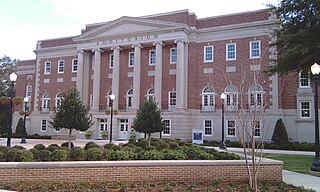
Foster Auditorium is a multi-purpose facility at the University of Alabama in Tuscaloosa, Alabama. It was built in 1939 as a Works Progress Administration project and has been used for Alabama basketball, women's sports, graduations, lectures, concerts, and other large gatherings, including registration. Its status as the largest indoor building on campus came to an end in 1968 with the opening of the Memorial Coliseum. The building housed the Department of Kinesiology until 2006. In April 2009, the University announced a major renovation for the auditorium. After the renovation, the Crimson Tide women's basketball and volleyball programs moved back to Foster Auditorium, their original home.
Richmond McDavid Flowers Sr. was the Attorney General of the U.S. state of Alabama from 1963 to 1967, best known for his opposition to then Governor George C. Wallace's policy of racial segregation. He also served in the Alabama Senate.
The Election Massacre of 1874, or Coup of 1874, took place on election day, November 3, 1874, near Eufaula, Alabama in Barbour County. Freedmen comprised a majority of the population and had been electing Republican candidates to office. Members of an Alabama chapter of the White League, a paramilitary group supporting the Democratic Party's drive to regain political power in the county and state, used firearms to ambush black Republicans at the polls.

Aubrey Willis Williams was an American social and civil rights activist who headed the National Youth Administration during the New Deal.
Jefferson is an unincorporated community in Washington Township, Clinton County, Indiana. The town is named for U.S. President Thomas Jefferson.
Arthur Davis Shores was an American civil rights attorney who was considered Alabama's "drum major for justice".
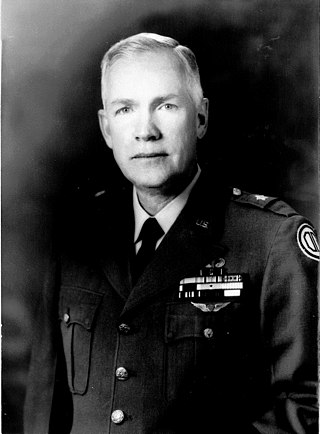
Henry Vance Graham was an American Army National Guard general who protected black activists during the Civil Rights Movement. He is most famous for asking Alabama governor George Wallace to step aside and permit black students to register for classes at the University of Alabama in Tuscaloosa in 1963 during the "Stand in the Schoolhouse Door" incident.
Albert J. Lingo was appointed in 1963 by Alabama Gov. George Wallace to head the Alabama Highway Patrol, which he led until 1965 during turbulent years marked by marches and demonstrations that characterized the Civil Rights Movement in the U.S. South.
Crisis: Behind a Presidential Commitment is a 1963 direct cinema documentary film directed by Robert Drew. The film centers on the University of Alabama's "Stand in the Schoolhouse Door" integration crisis of June 1963. Drew and the other filmmakers, including D. A. Pennebaker and Richard Leacock, were given expanded access to key areas, including United States President John F. Kennedy's Oval Office and the homes of United States Attorney General Robert F. Kennedy and Governor George Wallace of Alabama. The film first aired on the American Broadcasting Company (ABC) as an installment of Close-Up! four months after the incident, on October 28, 1963. It was added to the National Film Registry of the Library of Congress on December 28, 2011.
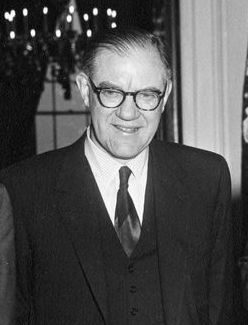
Roger M. Blough was the chairman of the board and chief executive officer of the United States Steel Corporation for 13½ years, from May 1955 through January 1969. In this position, he is best known for serving as the American steel industry's principal spokesman when the industry clashed in April 1962 with President John F. Kennedy on the issue of commodity steel prices.

Reuben Francis Kolb (1839–1918) was an Alabama politician. Kolb ran unsuccessfully for governor of Alabama thrice, in 1890, 1892 and 1894, first as a Democrat and then as a Populist. He also served as the state's commissioner of agriculture twice, in 1887 and between 1910 and 1914.
Frank Anthony Rose was an American academic, formerly a president of the University of Alabama.

Edward Reed Fields is an American white supremacist and anti-Semitic political activist.
Virgil Lamar Ware was an African American eighth-grader shot to death after the Birmingham church bombing.
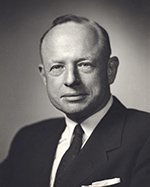
Will Reid Wilson, Sr., was an American politician and lawyer who served as attorney general of Texas from 1957-1963.
George A. LeMaistre, was a lawyer, banker, professor, and chairman of the Federal Deposit Insurance Corporation. A white Alabamian, he publicly challenged Governor-elect George C. Wallace in November 1962 on the issue of segregation.
